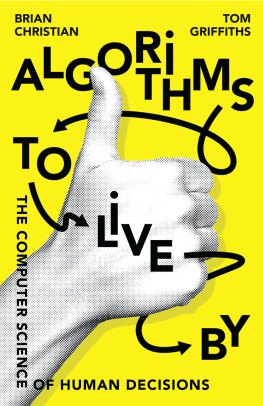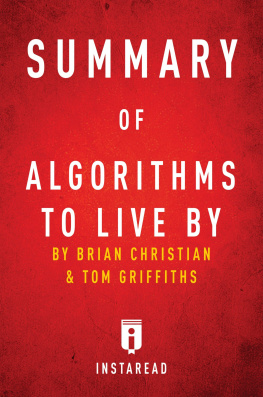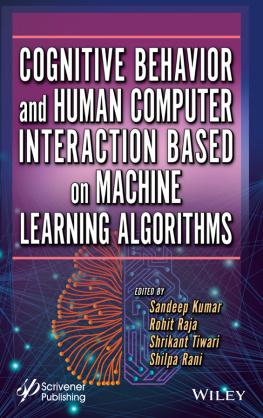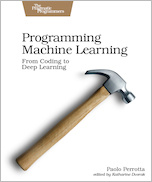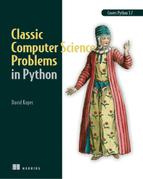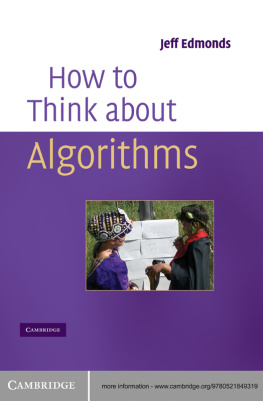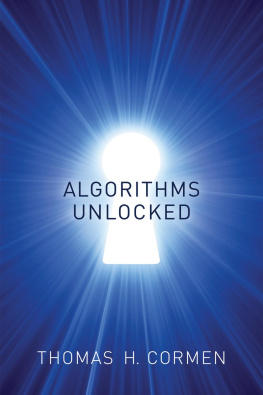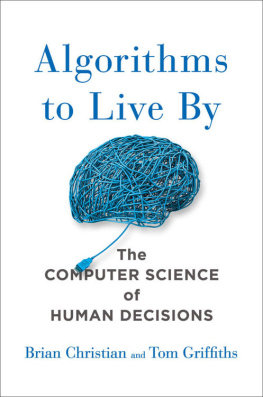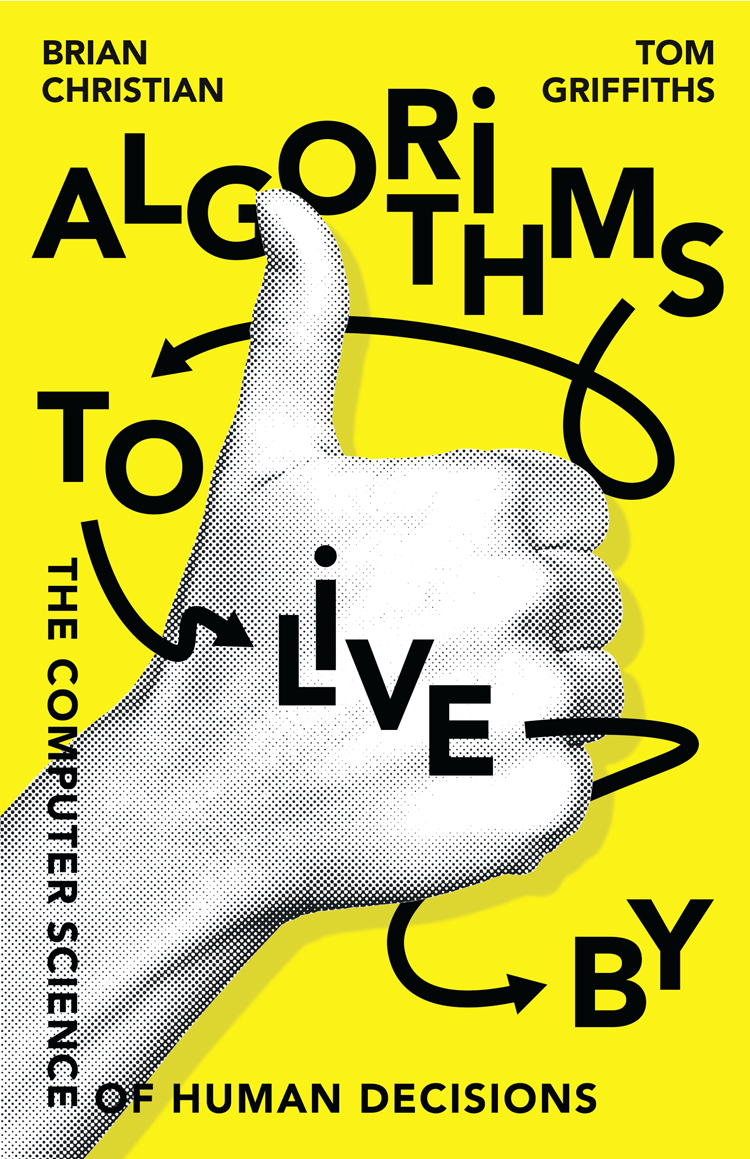

For our families
Imagine youre searching for an apartment in San Franciscoarguably the most harrowing American city in which to do so. The booming tech sector and tight zoning laws limiting new construction have conspired to make the city just as expensive as New York, and by many accounts more competitive. New listings go up and come down within minutes, open houses are mobbed, and often the keys end up in the hands of whoever can physically foist a deposit check on the landlord first.
Such a savage market leaves little room for the kind of fact-finding and deliberation that is theoretically supposed to characterize the doings of the rational consumer. Unlike, say, a mall patron or an online shopper, who can compare options before making a decision, the would-be San Franciscan has to decide instantly either way: you can take the apartment you are currently looking at, forsaking all others, or you can walk away, never to return.
Lets assume for a moment, for the sake of simplicity, that you care only about maximizing your chance of getting the very best apartment available. Your goal is reducing the twin, Scylla-and-Charybdis regrets of the one that got away and the stone left unturned to the absolute minimum. You run into a dilemma right off the bat: How are you to know that an apartment is indeed the best unless you have a baseline to judge it by? And how are you to establish that baseline unless you look at (and lose ) a number of apartments? The more information you gather, the better youll know the right opportunity when you see itbut the more likely you are to have already passed it by.
So what do you do? How do you make an informed decision when the very act of informing it jeopardizes the outcome? Its a cruel situation, bordering on paradox.
When presented with this kind of problem, most people will intuitively say something to the effect that it requires some sort of balance between looking and leapingthat you must look at enough apartments to establish a standard, then take whatever satisfies the standard youve established. This notion of balance is, in fact, precisely correct. What most people dont say with any certainty is what that balance is. Fortunately, theres an answer.
Thirty-seven percent.
If you want the best odds of getting the best apartment, spend 37% of your apartment hunt (eleven days, if youve given yourself a month for the search) noncommittally exploring options. Leave the checkbook at home; youre just calibrating. But after that point, be prepared to immediately commitdeposit and allto the very first place you see that beats whatever youve already seen. This is not merely an intuitively satisfying compromise between looking and leaping. It is the provably optimal solution.
We know this because finding an apartment belongs to a class of mathematical problems known as optimal stopping problems. The 37% rule defines a simple series of stepswhat computer scientists call an algorithmfor solving these problems. And as it turns out, apartment hunting is just one of the ways that optimal stopping rears its head in daily life. Committing to or forgoing a succession of options is a structure that appears in life again and again, in slightly different incarnations. How many times to circle the block before pulling into a parking space? How far to push your luck with a risky business venture before cashing out? How long to hold out for a better offer on that house or car?
The same challenge also appears in an even more fraught setting: dating. Optimal stopping is the science of serial monogamy.
Simple algorithms offer solutions not only to an apartment hunt but to all such situations in life where we confront the question of optimal stopping. People grapple with these issues every dayalthough surely poets have spilled more ink on the tribulations of courtship than of parkingand they do so with, in some cases, considerable anguish. But the anguish is unnecessary. Mathematically, at least, these are solved problems.
Every harried renter, driver, and suitor you see around you as you go through a typical week is essentially reinventing the wheel. They dont need a therapist; they need an algorithm. The therapist tells them to find the right, comfortable balance between impulsivity and overthinking.
The algorithm tells them the balance is thirty-seven percent.
* * *
There is a particular set of problems that all people face, problems that are a direct result of the fact that our lives are carried out in finite space and time. What should we do, and leave undone, in a day or in a decade? What degree of mess should we embraceand how much order is excessive? What balance between new experiences and favored ones makes for the most fulfilling life?
These might seem like problems unique to humans; theyre not. For more than half a century, computer scientists have been grappling with, and in many cases solving, the equivalents of these everyday dilemmas. How should a processor allocate its attention to perform all that the user asks of it, with the minimum overhead and in the least amount of time? When should it switch between different tasks, and how many tasks should it take on in the first place? What is the best way for it to use its limited memory resources? Should it collect more data, or take an action based on the data it already has? Seizing the day might be a challenge for humans, but computers all around us are seizing milliseconds with ease. And theres much we can learn from how they do it.
Talking about algorithms for human lives might seem like an odd juxtaposition. For many people, the word algorithm evokes the arcane and inscrutable machinations of big data, big government, and big business: increasingly part of the infrastructure of the modern world, but hardly a source of practical wisdom or guidance for human affairs. But an algorithm is just a finite sequence of steps used to solve a problem, and algorithms are much broaderand older by farthan the computer. Long before algorithms were ever used by machines, they were used by people.
The word algorithm comes from the name of Persian mathematician al-Khwrizm, author of a ninth-century book of techniques for doing mathematics by hand. (His book was called al-Jabr wal-Muqbala and the al-jabr of the title in turn provides the source of our word algebra.) The earliest known mathematical algorithms, however, predate even al-Khwrizms work: a four-thousand-year-old Sumerian clay tablet found near Baghdad describes a scheme for long division.
But algorithms are not confined to mathematics alone. When you cook bread from a recipe, youre following an algorithm. When you knit a sweater from a pattern, youre following an algorithm. When you put a sharp edge on a piece of flint by executing a precise sequence of strikes with the end of an antlera key step in making fine stone toolsyoure following an algorithm. Algorithms have been a part of human technology ever since the Stone Age.
* * *
In this book, we explore the idea of human algorithm design searching for better solutions to the challenges people encounter every day. Applying the lens of computer science to everyday life has consequences at many scales. Most immediately, it offers us practical, concrete suggestions for how to solve specific problems. Optimal stopping tells us when to look and when to leap. The explore/exploit tradeoff tells us how to find the balance between trying new things and enjoying our favorites. Sorting theory tells us how (and whether) to arrange our offices. Caching theory tells us how to fill our closets. Scheduling theory tells us how to fill our time.
Next page
